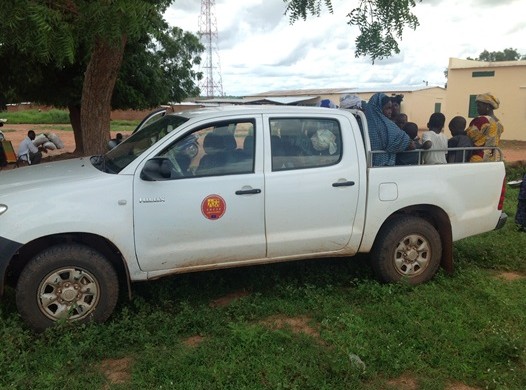Re-treating malaria with Pyramax®: WANECAM study supports safety and efficacy
Interim data from a clinical trial led by the West African Network for Clinical Trials of Antimalarial Drugs (WANECAM) published online in The Lancet Infectious Diseases today, supports the safety and efficacy of the artemisinin-based combination therapy (ACT) Pyramax® (pyronaridine-artesunate) when used for the re-treatment of adults and children (over 5 kg body weight).
“This is a major step forward in the fight against malaria in sub-Saharan Africa. The demonstration that Pyramax is well-tolerated when used to treat multiple episodes of malaria will help to bring this new ACT to countries where the current choice of efficacious antimalarial drugs is very limited.”
Prof. Abdoulaye Djimdé, study coordinator
The WANECAM sub-study data are now being used to support an application for a label change to allow for re-treatment with the Pyramax medicine and support its use in all malaria-endemic regions including sub-Saharan Africa, where the global burden of malaria weighs most heavily.
The WANECAM trial, a large, phase IIIb/IV multicentre clinical study, led by Prof. Abdoulaye Djimdé, University of Science, Techniques and Technologies of Bamako, Mali, is designed to evaluate the safety and effectiveness of two new ACTs, namely Eurartesim and Pyramax. Over a 2-year period, patients were randomized and treated with the same antimalarial each time they had a malaria episode.

These two ACTs (Pyramax and Eurartesim®, dihydroartemisinin-piperaquine) have recently been reviewed by the European Medicines Agency. The primary aim of the studies was to compare these two new antimalarial drugs with ACTs used in the standard treatment in the region (artemether-lumefantrine and artesunate-amodiaquine). The sub-study analysis was planned to provide supporting data for the repeat usage of Pyramax to support its wider use in malaria endemic areas.
“This is an essential study that advances our understanding of the safety and efficacy of a new antimalarial in a context close to real life usage.”
Dr Michael Makanga, EDCTP Director of South-South Cooperation and Head of Africa Office
The WANECAM network, which is primarily funded by the European and Developing Countries Clinical Trials Partnership (EDCTP) and cofunded by the Medicines for Malaria Venture (MMV) and other funding bodies, includes four West African countries, (three of which participated in the study: Burkina Faso, Guinea and Mali) and four European countries (England, France, Germany and Sweden) that work in partnership as a cross-border research team to contribute to the evaluation of new antimalarial drugs.
The total WANECAM project budget value is almost €9.3M. The EDCTP grant value including co-funding from EDCTP member states amounts to €4.8M while MMV (Geneva, Switzerland) contributed €3.6M to the budget. Other funders are the UK Medical Research Council, Swedish International Development Cooperation Agency, German Ministry for Education and Research, University Claude Bernard (Lyon, France), Malaria Research and Training Centre (Bamako, Mali), Centre National de Recherche et de Formation sur le Paludisme (Burkina Faso), Institut de Recherche en Sciences de la Santé (Bobo-Dioulasso, Burkina Faso), and Centre National de Formation et de Recherche en Santé Rurale (Republic of Guinea).
Medicines for Malaria Venture
MMV is a leading product-development partnership (PDP) in the field of antimalarial drug research and development. Its mission is to reduce the burden of malaria in disease-endemic countries by discovering, developing and delivering new, effective and affordable antimalarial drugs. More on the MMV website.
Pyramax
Pyramax, developed by Shin Poong Pharmaceutical and Medicines for Malaria Venture (MMV), is a once-daily, 3-day treatment for uncomplicated malaria. In 2012, it became the first ACT to receive a positive opinion under the European Medicines Agency’s article 58 process and is currently indicated for treatment of a single malaria episode in areas of low transmission with evidence of artemisinin resistance.
